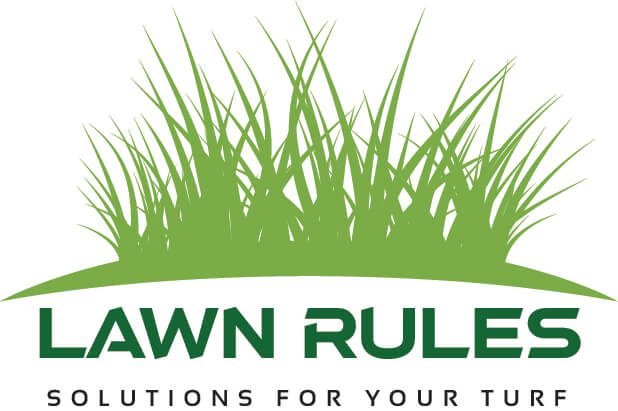Best Lawn Fertiliser
What is the best lawn fertiliser to use on your lawn? Great question. There are many types of fertiliser available for your lawn. I will try and educate you on the best lawn fertiliser options for all grass types ranging from Cool season grasses (Ryegrass, Tall Fescue) & warm season grasses (including all couch grass varieties, Kikuyu & Buffalo grass).
Liquid or granular fertiliser selection is very important due to may contributing factors in your lawn and soil profiles that must be considered before you choose the best lawn fertiliser. There are many varying factors influencing fertiliser performance and the choice between a liquid or granular fertiliser.
We need to choose carefully and get the best result for your investment. Contributing factors for choosing the best lawn fertiliser. Growth and development cause significant changes in nutrient concentration in grass as the growing season progresses. In grass, the concentration of nutrients in the leaf of the grass fluctuates with seasonal flushes of shoot growth. During the heat of summer, root growth is very slow, often non-existent. As the temperatures cools during spring and Autumn root growth resumes and demands in the best lawn fertiliser increase.
Frequent mowing and loss of nutrients
There are three important factors that affect how grasses respond to mowing:
1) Frequency
2) Intensity
3) Season.
A grass that is mowed frequently has more photosynthetic tissue removed and little opportunity for regrowth. These plants may enter a period when soil moisture, temperature and growth stage limit regrowth and little leaf area remains for photosynthesis. Thus, their ability to replenish reserves or produce additional new tillers is restricted. Grasses can produce large amounts of nutritious leaf growth during spring months. Leaves continue to age and die therefore; a portion of the leaves can be mowed with little effect on the plant. However, enough photosynthetic material must remain for production of carbohydrates to meet growth and respiration demands of the plant. If mowing removes too much leaf material, growth rate is slowed materially, and additional reserves may be required for regrowth (fertiliser).
Water Logging in heavy soils and effects on grass growth
Waterlogging occurs whenever the soil is so wet that there is insufficient oxygen in the pore space for grass roots to be able to adequately respire. Other gases detrimental to root growth, such as carbon dioxide and ethylene, also accumulate in the root zone and affect the turf. Shallow root systems that then develop limit the uptake of nutrients (particularly nitrogen) and water, particularly when the soil profile starts to dry in spring. Nitrogen is lost from waterlogged soils by leaching and denitrification (degassing). These losses, together with the lowered ability of plants to absorb nutrients from waterlogged soil, cause the older leaves to yellow.
Excess application of water and leaching of nutrients in sandy soils
Nutrient leaching is the downward movement of dissolved nutrients in the soil profile with percolating water. Nutrients that are leached below the rooting zone of the turf are at temporarily lost from the system, although they may be recycled if root grows deeper in the soil. Soils with high water infiltration rates and low nutrient retention capacity, such as sandy soils with low in organic matter content are conducive to nutrient leaching.
Environmental factors
Nutrient loss in the sandy soil is generally high when rainfall is heavy or excess. Heavy rainfall or high irrigation inputs leads to leaching of nutrients. Soil temperature also affects water and nutrient uptake, plant growth is restricted by low and high levels of soil moisture.
Conclusion
As listed above there are many contributing factors to choose the best lawn fertiliser.
Granular fertilisers are generally high in sulphur that really on many factors for the grass roots to absorb from the soil. This makes it nearly impossible to get sustained uptake by the roots over a long period of time.
The best way to overcome this problem is to use liquid chelated fertiliser.
Chelated liquid fertilisers are stable in a protected form and considered the best lawn fertiliser option. The chelated nutrient in the liquid fertiliser is reacted with an organic compound to form the chelate complex, with bonds connecting the nutrient to an organic compound. This nutrient is water soluble and doesn’t react with other factors in the soil. Meaning that the chelated nutrients can be applied to the soil or to the leaf (foliage) in a form that will not be locked up in the soil or interfered with by many factors listed above. Lawn Rules chelated liquid fertiliser will be virtually all available to the leaf and the roots of the grass, and will not be flushed through the soil by heavy rain.
Lawn Rules chelated liquid fertiliser is delivered right to the door, mainly via the leaf for fast uptake and via the roots without the major nutrient losses of a granular fertiliser. The balance of power is swung into the favour of your grass by using the correct type of chelated liquid fertiliser. Granular fertilisers are considered synthetic that are artificially manufactured and can be rejected by grass variety (plant) as it is considered alien or unrecognised chemical species. Quality is variable and only works under certain conditions.
Lawn Rules chelated liquid fertiliser is considered natural from of chelation and works under all conditions making it the right choice of lawn fertiliser 100% of the time.
Visit www.lawnrules.com.au for our range of best lawn fertiliser to suit all conditions and grass and soil types.

